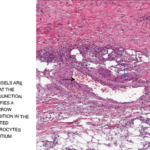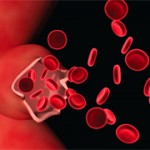There are other earlier cases we can now recognize as probable vasculitis, based on autopsy reports.2 Dr. Matteson points out, “The introduction of the more scientific methodology and reasoning and technology really helped revolutionize our understanding of disease. The Kussmaul and Meier case is really a watershed in rheumatology for that reason.”
‘I think this medical history teaches us how we came to know what we know, & … that helps us know how medicine has advanced & was made more scientific &, ultimately, led to better understanding of the disease & its treatment.’ —Dr. Matteson
The Kussmaul & Meier Case
Kussmaul and Meier published the first characterization of polyarteritis nodosa in the inaugural journal of German Archive of Clinical Medicine: “On a previously undescribed peculiar arterial disease (Periarteritis nodosa), accompanied by Bright’s disease and rapidly progressive general muscle weakness.”1 The first of the clinical cases described is that of Carl Seufarth, a 27-year-old journeyman tailor hospitalized in Freiburg, Germany. Kussmaul and Maier first speculated the disease might have been caused by a human form of nematode infection similar to Strongylus, and even published an initial abstract to this effect.3 However, the two withdrew this impression in their subsequent full report of the case.1
Seufarth appeared quite ill on first contact. Kussmaul and Meier described Seufarth as “[one] of these patients for whom one can already give the prognosis before the diagnosis. The first impression was of a lost soul whose … days were numbered.” The patient’s symptoms seem to have begun a month or more earlier. Seufarth developed acute signs and symptoms of recurrent fevers, tachycardia, decreasing appetite, severe thirst, global myalgias, mononeuritis multiplex, abdominal pain (with occasional vomiting and diarrhea alternating with constipation), proteinuria and modest lymph node swelling. Kussmaul and Meier also described a sign characteristic of vasculitis: “small nodular tumors in the subcutaneous tissue of the chest and abdomen.”1,4
The authors’ description of Seufarth’s rapidly advancing mononeuritis multiplex (secondary to his vasculitis) is particularly vivid. Seufarth was admitted with a minor neurological deficit including numbness of the thumb and neighboring two fingers of the right hand. This rapidly worsened.
“In the next days the general weakness increased so rapidly that he was unable to leave the bed, [and] the feeling of numbness also appeared in the left hand.” The paralysis progressed quickly but inconsistently. “Before our eyes a young man developed a general paralysis of the voluntary muscles, which, accompanied by severe muscle pains, progressed so rapidly, that the patient was already bedbound after a few days, had to be fed by the attendants, and within a few weeks was almost completely robbed of the use of most of his muscles.”1,2



